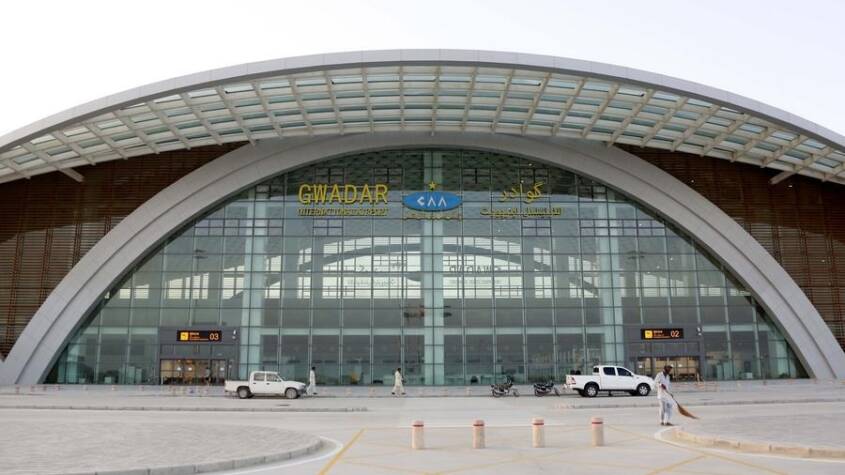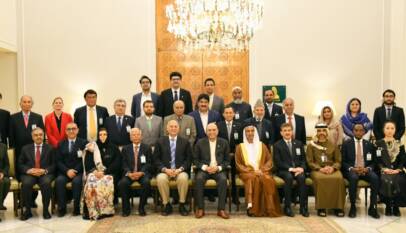New Gwadar International Airport to boost regional connectivity and economic growth in Pakistan
The New Gwadar International Airport, built with Chinese assistance, is set to be handed over to Pakistani authorities, marking a major upgrade in connectivity and economic potential for the region. Managed by Khalid Kakar, this state-of-the-art facility will accommodate wide-body aircraft, enhance passenger and cargo operations, and establish Gwadar as a transshipment hub. Despite challenges like water scarcity and saline soil, Chinese engineers employed innovative techniques to complete the project to high standards, inspiring local construction practices. The airport, a symbol of Pakistan-China friendship, will boost regional growth under the China-Pakistan Economic Corridor (CPEC).
GWADAR, Pakistan, Nov. 5 (Xinhua) — Khalid Kakar, airport manager of Gwadar Airport in Pakistan’s southwestern Balochistan province, stood attentively, observing the final touches on the newly constructed, China-aided New Gwadar International Airport, which in just a few days would be officially handed over to Pakistani authorities, including Kakar himself, to commence operations.
A short distance away, Chinese and Pakistani engineers huddled around a large map spread out on a table, discussing final details. The atmosphere at the airport was abuzz with activity as staff from various departments, both Pakistani and Chinese, moved purposefully through the terminal.
“This is a huge airport in Pakistan, equipped with state-of-the-art technology and an architectural marvel,” Kakar, a native of Quetta, the capital city of Balochistan, told Xinhua, adding that “I have watched its construction closely over the past two years since I arrived here. The hard work, dedication, and passion of the Chinese engineers and architects are truly admirable.”
Previously, residents of Gwadar and business travelers from other provinces faced significant challenges in reaching the city due to the limited capacity of the old airport, and Kakar believes that the new facility is set to transform connectivity and foster economic growth in the region.
The old airport has very limited operational capacity, capable of accommodating only small aircraft with a maximum passenger capacity of several dozens of people, whereas the new Gwadar airport is designed to handle wide-body aircraft, significantly enhancing its operational potential, Kakar said.
He said this advancement will encourage airlines with modern fleets to begin services to and from Gwadar, overcoming the limitations previously posed by the old airport, adding that the enhanced connectivity will open new vistas of development in the district due to the China-Pakistan Economic Corridor (CPEC).
Besides serving passenger flights, the airport will also play a crucial role in cargo operations, Kakar noted, adding that a cargo shed is currently under construction, with plans for an additional five sheds to be built in the future.
“Once operational, this facility will provide significant support to the business community in Gwadar and beyond, making Gwadar a transshipment hub through the Gwadar port being developed under CPEC,” he added.
Talking to Xinhua about the intricate details of the construction, Qin Zhengrong, a senior engineer from the China Railway Beijing Engineering Bureau, said that the apron is divided into five slots, which are Class C and Class F, capable of accommodating the largest civil aircraft, including the Boeing 747-800.
The airport’s runway spans 3,658 meters in length and 45 meters in width, with additional 15-meter shoulders on each side, bringing the total usable width to 75 meters. This makes it one of the few 4F-grade airports in Pakistan equipped to handle the largest jets.
He said that the Chinese companies also faced a major challenge of water scarcity during the airport’s construction, and after a failed search for groundwater, the team used water trucks and later built a 2.5-km ditch to bring seawater for foundation work and freshwater for cement was sourced through municipal pipelines after negotiations with local authorities.
“The site’s unstable, saline soil required special treatment, and for that, various compaction techniques were tested, leading to an optimized, patented foundation design, and a cement-soil sealing layer was added to prevent settlement, with multiple layers of material placed beneath the concrete surface for added durability,” he added.
Ziauddin Salman, an engineer representing the National Engineering Services of Pakistan, observed the high-quality standards and finishing techniques employed by the Chinese team in the airport’s construction, during his visit as a third-party observer at the airport.
“My team and I conducted thorough inspections and evaluations, finding that every aspect of the project, from structural design to construction details, was executed with remarkable precision and care,” he told Xinhua.
Salman highlighted that they did not find any objection regarding any parameters, including vertical alignments and finishing work, which met the highest satisfaction standards, adding that the Chinese team working on the project has set a commendable example for engineering construction.
“The two critical components in engineering are design and construction based on that design, and both aspects have been exceptionally managed in this project, making it a benchmark for contractors and consultants, not just in Pakistan, but also on an international scale,” he added.
Salman said that the Pakistan Engineering Council and the well-reputed contracting and consulting firms should be invited to visit the project to witness the best quality work and replicate it in their projects.
“By witnessing the quality of design and construction firsthand, these firms could incorporate these high standards into their own work to yield significant benefits, enabling the formulation of designs based on successful patterns observed at this site,” he added.
The project generated a considerable number of employment opportunities, and the local workers, who have had the chance to observe the dedication and work ethic of the Chinese team, will elevate the standard of construction practices in Pakistan and inspire local professionals to emulate the same commitment to quality when they worked on the local projects in the future.
To ensure the successful operation of the new airport, officials have been sent to China for training, and two batches have already completed their training, focusing on the operational aspects of running the airport and the trained officials will play a vital role in launching the new airport, Kakar said.
“The airport symbolizes the enduring friendship between Pakistan and China, particularly for Gwadar, and the establishment of such a state-of-the-art facility is a significant milestone for the development of Pakistan,” he added.
Chinese envoy Zhao Shiren urges students to uphold integrity and strengthen China-Pakistan ties
LAHORE:The Consul Generals from several countries and other distinguished guests attended …











